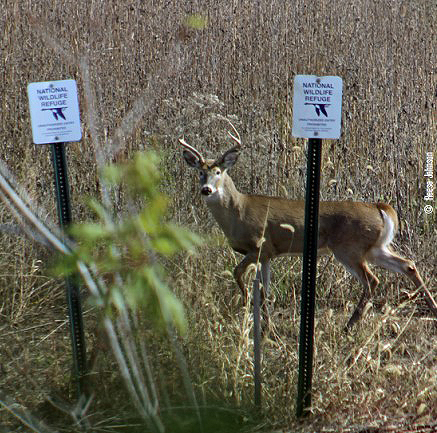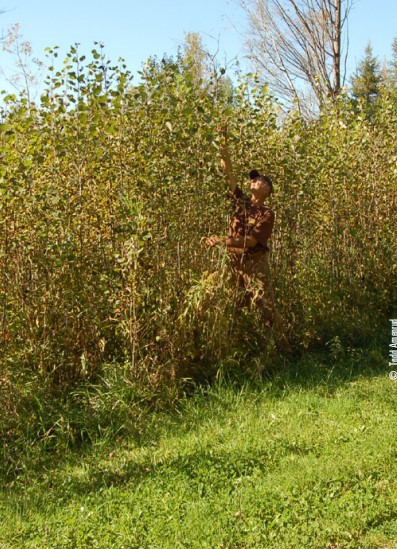Reese Johnson | Originally published in GameKeepers: Farming for Wildlife Magazine. To subscribe, click here.

With a background in boundary surveys and now working as a Land Specialist, property lines are an essential part to my living. An older gentleman once told me, “There’s nothing more heavily guarded and prized than a man’s property line.” Yet, it wasn’t many years ago when crossing another’s line didn’t seem to be the “sin” it is today.
Urbanization plus increasing crime rates, continued division of land parcels, along with the growing popularity of hunting has added fuel to this possessive attitude. As time has advanced we’ve shifted, because of these previous mentioned factors, towards individual parcel management rather than the bit more lackadaisical attitude of days past. This has, in turn, affected our overall view on property lines and our possessive attitudes.
With all of that said, we are in a new age where property management and boundaries go hand in hand. There are definitely some aspects to consider when determining the best management plan for your farm in the 21st century.

fire-breaks or where agriculture meets timber, wildlife use these
transitions for travel ways.
Regarding your whitetails, turkeys or other important game species, the most important area of your farm is the center. Regardless of the size, this is where you would ideally want your target species to spend the majority of their time. In theory, they will be the most protected here.
Very few folks reading this article will have access to enough contiguous acres to contain a wild animal solely on their property for the longevity of its life. It’s a common practice with land managers to keep a “sanctuary” near the center of their property. Whether that area is food, bedding, or a rest area will vary upon your circumstances. Properties ranging from 200 to 600 acres can yield some of the most noticeable results from this method. Hunting the fringe around the sanctuary can help maintain an unpressured target species.
Usually there’s at least one abrupt change in a property line whether it’s field to woods, a road, river or some other transformation. A favorite method of mine is implementing a screen if there’s a chance anyone could see into the property from the other side of the break. Buffer strips between two fields, planted trees (especially evergreens), or something like Egyptian wheat make for great visual barriers. These strips can take away the temptation of anyone potentially seeing, shooting or hunting over your line. These also provide you with a great opportunity for entry/exit into the area without disturbing any wildlife.
Logging can also be an effective tool if done correctly, especially on larger tracts. Selective cuts can create bedding either on the interior of the farm or even along the exterior next to the property line. Sure you may be creating bedding near your neighbor’s line, but the diversity makes hunting better for everyone. Hinge cutting along the line of a timber to timber property transition can double as a screen and bedding. Please note; this would only be a recommendation in certain situations as this would obviously lure deer to bed near the line and your neighbor’s rifle.
Many times a property line was established based on a change of terrain. Fence lines, whether old or new, seem to generally follow the land. Spending time in the woods during the winter months can help you determine how to best utilize your land without being known as a “line hunter.” Some properties, especially flat and open areas, leave little option of where to hunt because a fencerow may be the only form of cover.

wish to make a transition area within a timber to timber
boundary, simply taking out canopy trees along the line
should give you thick regrowth in short order. Here you see
two years’ worth of regrowth.
On smaller properties you may have to hunt according to the hand you’ve been dealt. In this situation, respectfully and morally playing off your neighbor’s lines and the terrain will undoubtedly be your best choice.
When limited by lack of acreage, and most often even when not, the best option is to offer or bolster what your particular hunting area is lacking. In many cases that is food, but it could also be bedding or in some cases even a nearby, reliable water source if the area is in a fairly open part of the country. Having that missing piece can often expand an animal’s home range and make your small property as attractive as any other piece of land. Don’t underestimate how important each element is and try to offer that missing piece to your wildlife. Whether they need food, bedding or another part of the equation, this is how to make your tract more attractive than the surrounding area.
No matter how large or small the region you manage may be, there’s nothing more valuable than a good neighbor. It’s the ultimate bonus if those neighbors have similar goals and hope to work with you in the managing of your properties collectively. Most of us are not that fortunate and in many cases it may be only one of several neighbors that cause most of the issues. While it’s often tough to do, finding some common ground may be well worth it in the end if a wounded animal crosses a property line it will make it easier, or a “shared” buck needing “one more year” may get to see maturity.
Boundary surveys are an underrated investment on what is likely the most expensive purchase you may ever make. Knowing where that exact corner falls and keeping that point marked gives “peace of mind.”
Having a completed boundary survey can also be a big time saver if for any reason you needed to sell or had an opportunity to do a 1031 (land exchange). Neighbors and property lines can be a huge issue and a survey can resolve any hard feelings before they ever arise with answers for all parties. Very few times will one farm have it all and that means a variety of habitat to support a population without ever crossing over to another landowner.
Animals don’t see property lines or fencing as a boundary, they see travel corridors, food and rest areas. It’s our job as gamekeepers to see what most do not and blend the views of our human property lines with an animal’s routine instinct for survival to determine the best method to hunt or manage the land.
Reese Johnson is a Land Specialist with Mossy Oak Properties in the Western Kentucky area.































